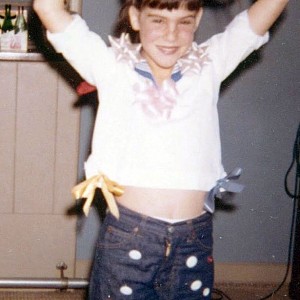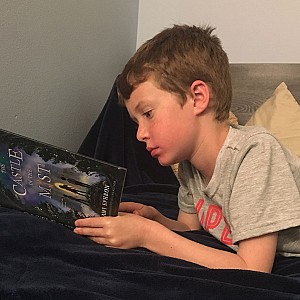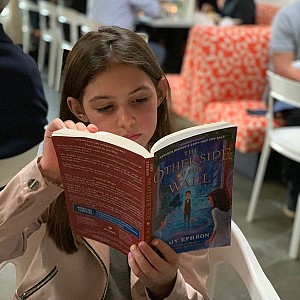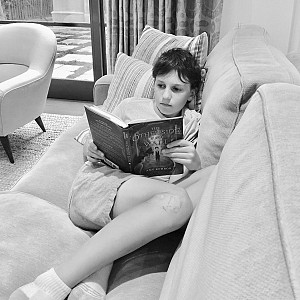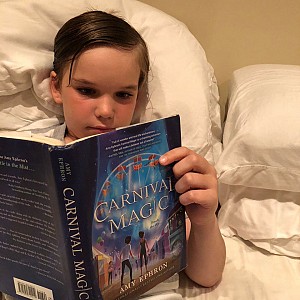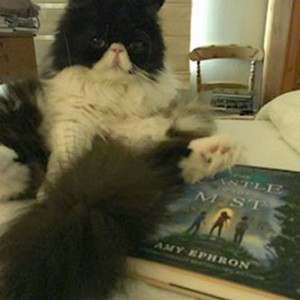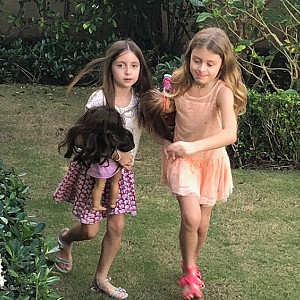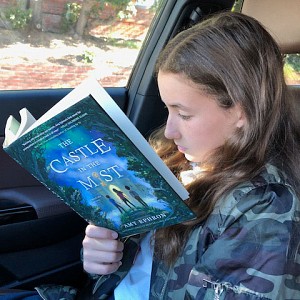 Amy Ephron’s writing spans an array of genres and media. Her novels for adults include A Cup of Tea and One Sunday Morning; she authored a book of essays and observations entitled Loose Diamonds; and she is a contributor and contributing editor at Vogue and Vogue.com. Her writing has appeared in numerous additional periodicals, among them the New York Times, the Los Angeles Times, and House Beautiful. Ephron explores new literary turf in her debut children’s book, The Castle in the Mist, a middle-grade novel released this month. In the story, American siblings Tess and Max are spending a summer in England with their aunt when an old brass key opens a gate leading to a hidden castle, where they find magic, mystery, and a new friend.
Amy Ephron’s writing spans an array of genres and media. Her novels for adults include A Cup of Tea and One Sunday Morning; she authored a book of essays and observations entitled Loose Diamonds; and she is a contributor and contributing editor at Vogue and Vogue.com. Her writing has appeared in numerous additional periodicals, among them the New York Times, the Los Angeles Times, and House Beautiful. Ephron explores new literary turf in her debut children’s book, The Castle in the Mist, a middle-grade novel released this month. In the story, American siblings Tess and Max are spending a summer in England with their aunt when an old brass key opens a gate leading to a hidden castle, where they find magic, mystery, and a new friend.
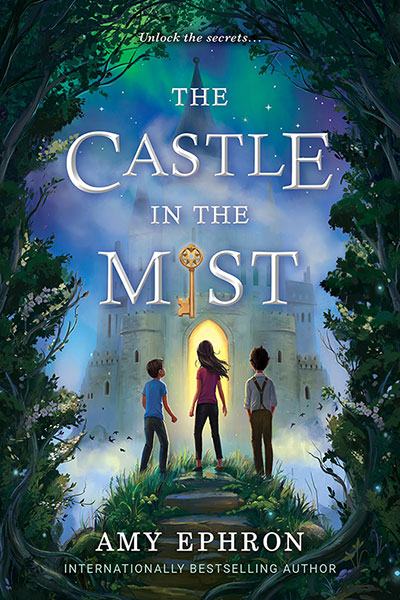 After writing many books and articles for adults, what inspired you to pen a children’s novel?
After writing many books and articles for adults, what inspired you to pen a children’s novel?
One of the reasons I wrote this book goes back to my own childhood. When I was little, I felt—and I still do—that children’s book characters and places, like Oz and Misselthwaite Manor in The Secret Garden, were absolutely real—and I’d get lost in them. They are so vivid to me. In fact, my visualizations of these settings almost had the clarity of a film. I really wanted to try to do a modern-day mash-up of wonderful, old-fashioned children’s books—one about imagination and wishing.
I’ve been so influenced by Frances Hodgson Burnett that I wanted to try to write a book that was, in some way, a contemporary version of her fiction. In fact, I was one of the originators, and the executive producer, of the 1995 film adaptation of her A Little Princess. But attempting a modern-day version of Burnett’s classics was somewhat dangerous in a sense, and involved setting the bar kind of high. I do hope I’ve achieved writing a novel that’s accessible to 10-year-olds, and that will be read by others as well. I’ve been getting a great reaction from grownups who tell me that, after reading a few pages of The Castle in the Mist, they didn’t leave the house until they’d finished it.
Was it at all intimidating to take on a new creative challenge with your leap into the children’s book arena?
Well, I have had some experience working in the children’s world. One of my first jobs after high school—and I had many of them—was working as an editor in the non-broadcast division of Children’s Television Workshop, which created Sesame Street and The Electric Company. We developed toys and games, and I did a little bit of everything, including going out to the toy factory at 2:00 in the morning to make sure that Cookie Monster was the right color! I worked very closely at the time with a board of educators, and I feel as though I learned a lot from them.
I have a strange way of writing books. I don’t do a traditional first draft and then a second one. I do many, many versions of a page before moving on to the next page, and by the time I’m done I have a complete manuscript. Unless structural changes are needed, my initial version of the story is pretty much the final one. In this case, since children’s fiction is a new market for me, and no one knew me as an author who could write for children, I wrote the novel kind of on spec—sort of like a screenplay. I had to solve some problems in the story by myself, and finished the whole novel before showing it to anyone. Luckily, Jill Santopolo, my wonderful editor at Philomel, liked it, and gave me some amazing editorial advice.
The Castle in the Mist weaves together realism and magic. Was it difficult finding the right balance between the two?
It all came together over time. I had thought about this book for a long time in a broad way, but had never really outlined it. I knew I wanted the story to be about two American kids who go to stay with their recently widowed aunt in England. I didn’t know at first that the children’s mother is ill, or that their father is far away, working as a war reporter. As it turns out, all of the characters are nursing broken hearts, which is obviously very real.
At the same time, I wanted magical things to happen. England is a place where magical things do happen—consider the myths surrounding Stonehenge, which is located in Wiltshire, not too far from Tess and Max’s aunt’s house in Hampshire. I wanted my characters to experience things that may or may not be real. Is The Castle in the Mist playing with an alternative universe, or playing with the imagination? I don’t really know the answer to that. What I do know is that the novel is about wishing, being careful about what you wish for, and following rules.
Rules obviously play a role in your novel, as Tess constantly hears her parents’ voices in her head, advising her to make the right choices. Do you hope their words also provide guidance to readers?
I hope so. Some of the same advice was passed down to me by my own mother—things like, if you get lost, try to get back to where you started; and always believe in yourself. I always carry around in my head things that my parents and people I consider smarter than I am taught me. I call them life lessons, and I hope I’ve passed them on to my own children, who are now starting to have children of their own.
I loved the idea that Tess and Max were given a set of ethics by their parents, who play a strong parental role in the children’s lives even if they aren’t physically present. This helps them make wise choices, which is especially important with someone like Tess, who is very headstrong and brave, and doesn’t always think before she jumps. At the same time, though we have to have our wits about us at all times, kids should have the freedom to figure out how to trust one another and to work together. I didn’t want this novel to be preachy, but I hope that message comes through.
The Castle in the Mist by Amy Ephron. Philomel, ISBN 978-0-399-54698-3



